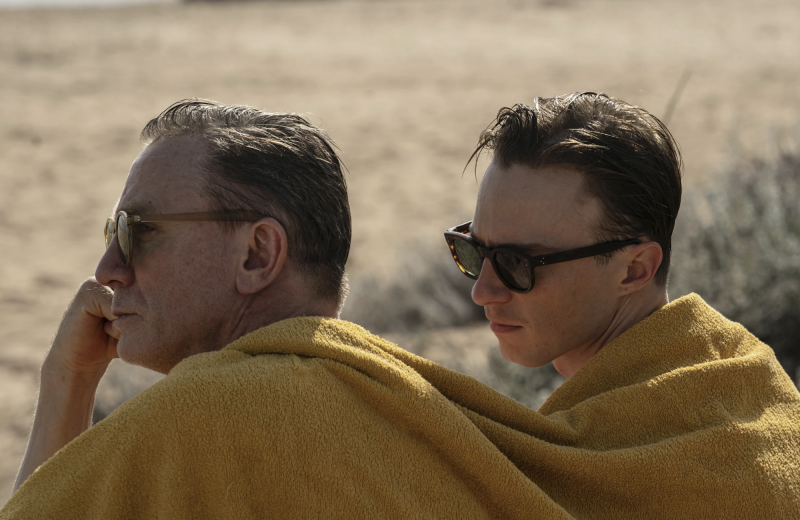There is a single-take scene in which Lee assembles the equipment necessary to inject himself with heroin and the camera watches as he gets high, slowing his body down to become a sort of pathetic statue at the kitchen table.
Symbols — a wriggling bug, snakes and mirrors — combine with trippy techniques meant to show Lee’s interior life, like his arm superimposed onto a scene tenderly touching his paramour when, in reality, it is hanging still. And there is a late moment of surreal beauty as the lovers climb into each other’s bodies, hands under the skin.
Queer — broken up into three chapters and an epilogue — gets trippier in the later stages, when Lee and Eugene leave Mexico in search of a South American plant that apparently gives users telepathic powers. Lee is clearly trying to find a shortcut into the soul, bypassing the messiness of human interactions. “You think it can fix things for you,” he is told.
But this part isn’t well integrated with the first half, almost like a movie fragment, and the filmmakers fumble an attempt to deal with the death of Burroughs’ wife, Joan Vollmer. Guadagnino seems to unnecessarily channel Stanley Kubrick as the movie wobbles to its end, with scenes filled with deafening sound, then pregnant silence and an artificial momentousness.


